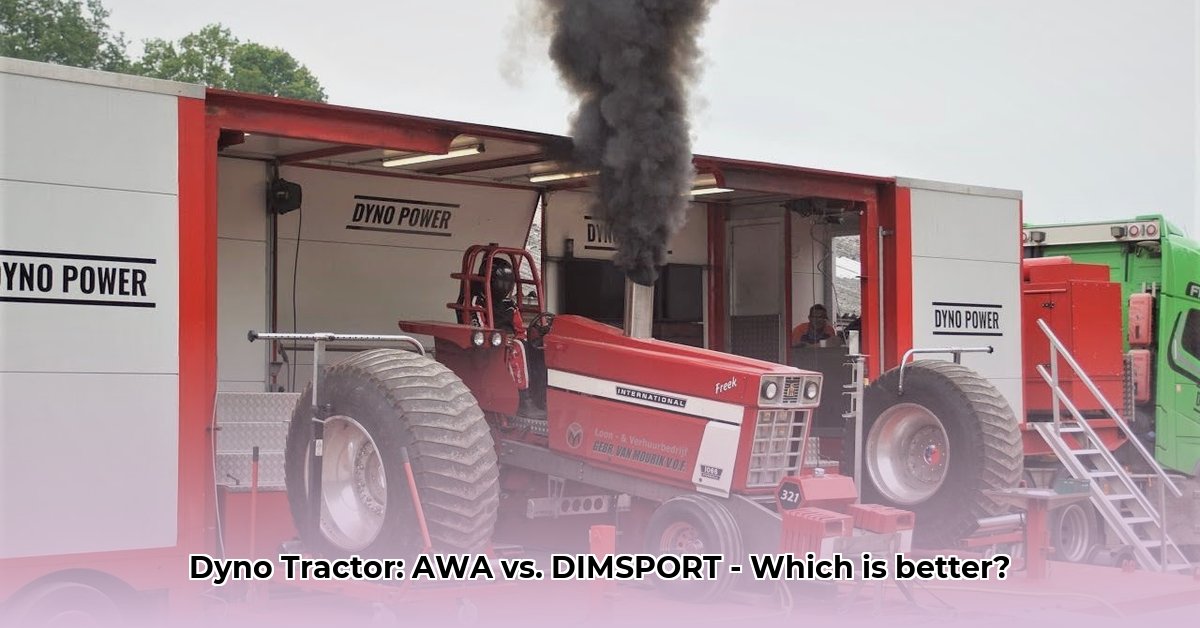
Choosing the right PTO dynamometer is crucial for efficient agricultural equipment maintenance. This comparative review analyzes two leading brands, AW and DIMSPORT, to help you make an informed decision. We'll explore accuracy, hardware, software, portability, cost, service, and ideal use cases, providing actionable advice for various stakeholders.
Accuracy and Precision: Measuring Performance
Both AW and DIMSPORT claim high accuracy, but direct comparisons are scarce. Instead, we examine their methodologies. Sensor technology, calibration frequency, and software algorithms all impact accuracy. More frequent calibration and sophisticated algorithms generally lead to more precise results. However, this comes with increased costs and potential downtime. Ultimately, the accuracy of either system depends on factors like proper calibration, consistent testing environments, and operator skill. A thorough understanding of each manufacturer's methodology is essential when choosing between AW and DIMSPORT PTO dynamometers for agricultural testing.
Hardware: Design and Durability
AW dynamometers are robust and built for longevity in fixed locations. They’re ideal for high-volume testing environments prioritizing reliability and minimal downtime. In contrast, DIMSPORT emphasizes modularity and portability, making them perfect for mobile testing services and on-site diagnostics. Consider the power range required for your specific tractors; ensure the dynamometer can accurately measure your equipment's output. Weight and physical size are also crucial considerations, especially concerning portability and maneuverability within workshops or testing areas.
Software and Data Acquisition: Analyzing the Results
DIMSPORT’s software often boasts more advanced features and a more intuitive interface compared to AW. DIMSPORT's software might offer automated report generation, data visualization, and integration with other systems. While AW software is functional, DIMSPORT provides a more extensive and detailed data package, impacting the depth of analysis possible. The user-friendliness of the software is critical; a smooth, efficient interface minimizes downtime and maximizes productivity.
Portability: On-site Flexibility
DIMSPORT’s portability is a key differentiator. Testing equipment directly in the field eliminates the need for transporting tractors, saving time and resources. This is particularly beneficial for mobile service technicians. AW systems, while reliable, are generally stationary and require a dedicated testing environment. The portability of DIMSPORT also minimizes the risk of issues during tractor transport. However, appropriate handling and transportation procedures remain critical.
Cost and Return on Investment (ROI): The Long-Term View
Direct price comparisons are unavailable. However, consider long-term costs: maintenance, repairs, lifespan, and potential downtime. While the initial investment might differ, a more reliable system with a longer lifespan could offer superior ROI. A comprehensive cost-benefit analysis, considering warranty periods, maintenance frequency, potential downtime, and increased efficiency, is crucial. The value of accurate, timely data should also be factored into this long-term perspective.
Service and Support: Ensuring Uptime
Both companies offer service and support, but their strengths vary. AW has a strong reputation for readily available support, prioritizing minimal downtime. DIMSPORT’s service network requires further investigation. Regardless of your choice, a solid warranty and easy access to support are critical for minimizing disruptions. Local dealer networks can be particularly beneficial, although access may vary by location.
Ideal Users: Finding the Right Fit
- AW: Ideal for large dealerships, manufacturers, and those needing rugged, reliable dynamometers with readily available service, prioritizing minimal downtime.
- DIMSPORT: Best suited for mobile testing services, research institutions, and operations requiring advanced data analysis and on-site testing capabilities.
Choosing Your Dynamometer: A Step-by-Step Guide
Define your needs: What type of testing will you primarily perform? How much mobility do you require? What level of data analysis do you need?
Assess your budget: Consider not only the initial investment but also ongoing maintenance and support costs.
Compare features: Carefully review the hardware, software, portability, and service capabilities of both AW and DIMSPORT.
Gather more information: Look deeper into case studies, testimonials, and the specific needs of your business.
Make your decision: Select the dynamometer that best aligns with your needs, budget, and long-term goals.
This comparative analysis underscores the importance of understanding application requirements before choosing between AW and DIMSPORT. The ideal system depends entirely on specific operational needs and priorities. Remember to conduct thorough research and seek additional expert opinions to ensure the best decision for your unique circumstances.